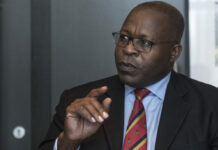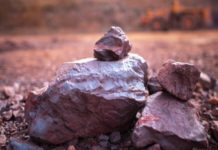
[miningmx.com] – THE government of the Democratic Republic of Congo (DRC) would be assisted by events in neighbouring Zambia in which recently legislated tax laws are to be reviewed, said Willem Jacobs, chief operating officer for Randgold Resources’ central and east Africa region.
Commenting on a review of the DRC’s mining code, which includes increases in the tax burden, Jacobs said: “I think what happened in Zambia this year has helped the DRC government. Now we see the effect of changing the tax burden; capital can disappear overnight”.
Edgar Lungu, Zambia president, asked his government on March 25 to change a new tax system, in which royalties on some mines had been tripled to 20%.
The increase in royalties had been heavily criticised by executives of companies operating in Zambia, and by analysts. In December, Barrick Gold Corp. threatened to shut its Lumwana copper/gold mine while Toronto’s First Quantum Minerals said it would not proceed with up to $1bn in new investment at its Kansanshi mine.
Lungu subsequently asked the country’s mines minister, Christopher Yaluma, and finance minister, Alexander Chikwanda, to consider a range of options from negotiating an interim tax deal with some miners, deferring the new system, reverting to the old one or modifying the existing law, said Bloomberg News.
The latest version of the DRC’s mining code has reduced proposals for the state share of projects to 10% from 30%, the corporate tax rate by 5 percentage points to 30%, and a gold-mining royalty to 3.5% from 6%. It said a plan for a 50% tax on “excess profits’ had also been removed.
However, Simon Tuma-Waku, vice-president of the DRC’s Chamber of Mines, said today that the proposed new code would nonetheless reduce the return on gold projects to “virtually zero” while investors in the country’s copper and cobalt sectors would earn only some 20% of total cash flow over the life of a mine against the government’s 80%.
“No investor will commit to a country, no matter how impressive its geology, if there no prospect of a reasonable return,” said Tuma-Waku, who was the mines minister when the DRC’s current fiscal and regulatory regime was written in 2002.
Jacobs said there was still a long way to run before the DRC promulgated its new mining code with the matter, which has been endlessly debated over the last four years, being sent for discussion in Parliament.
“I think the Ministry of Finance knows this can’t fly,” said Jacobs. “It is very flawed legislation that has been referred to Parliament,” he said.
Randgold Resources and AngloGold Ashanti share the $1.7bn Kibali gold mine in the DRC which has a nameplate capacity of 550,000 ounces a year whlst Ivanhoe Mines, a Toronto-listed minerals development company, recently raised C$105m in equity for its Kamoa copper project in the DRC, and the South African Platreef development.
“The Kibali gold project, made possible by the code’s provisions, increased the country’s gold production by 250% in its first full year of operation in 2014,” said Tuma-Waku.
“The future contribution of the mining sector to the public treasury is expected to rise substantially,” he said.
“It is difficult to understand why, just at the point when it is beginning to reap the full benefits of creating an investor friendly regime, the government now proposes to break down the very good work that has been done – with its support – instead of building on it,” said Tuma-Waku.
“Its new-look code will set back the mining industry, and with it the development of the DRC economy, by at least 10 years,’ he said.











